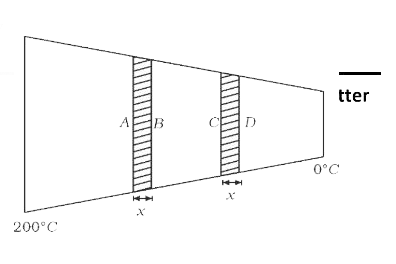A
B
C
D
Text Solution
Verified by Experts
The correct Answer is:
|
Topper's Solved these Questions
TRANSFER OF HEAT
CENGAGE PHYSICS|Exercise GENERAL EXERCISE|17 VideosView PlaylistSTATIC ELECTRICITY
CENGAGE PHYSICS|Exercise OLYMPIAD AND NTSE LEVEL EXERCISES|10 VideosView Playlist
Similar Questions
Explore conceptually related problems
Knowledge Check
A
B
C
D
Submit
A
B
C
D
Submit
A
B
C
D
Submit
Similar Questions
Explore conceptually related problems
CENGAGE PHYSICS-TRANSFER OF HEAT-OLYMPIAD AND NTSE LEVEL EXERCISES
- Two ends of a conducting rod of varying cross-section are maintained a...
04:23
|
Playing Now - The graph shown gives the temperature along an X axis that extends dir...
03:05
|
Play - Assertion : While measuring the thermal conductivity of liquid experim...
01:35
|
Play - Heat travels through vaccum by
01:58
|
Play - We consider the radiation emitted by the human body. Which of the foll...
05:48
|
Play - When we rub our palms they get heated but to a maximum temperature bec...
01:11
|
Play - In conduction process, the molecules of the solid pass the heat from o...
01:05
|
Play - Solids are not heated by convection because
01:23
|
Play - A wooden spoon is dipped in a cup of ice cream. Its other end
02:44
|
Play - Assertion : Temperature near the sea-coast are moderate. Reason : Wa...
01:20
|
Play
